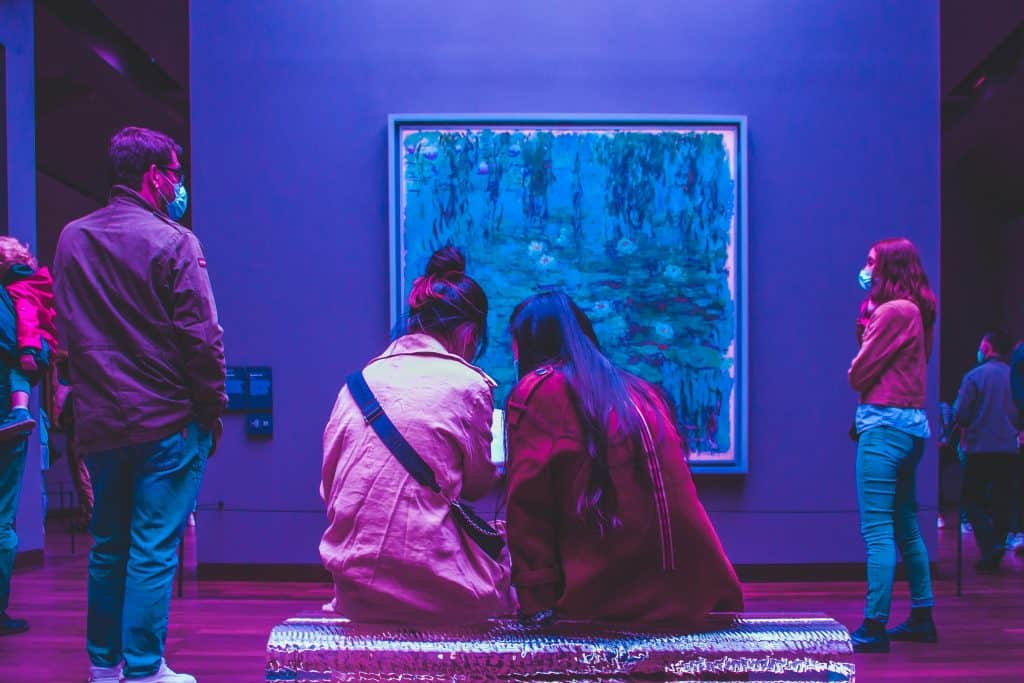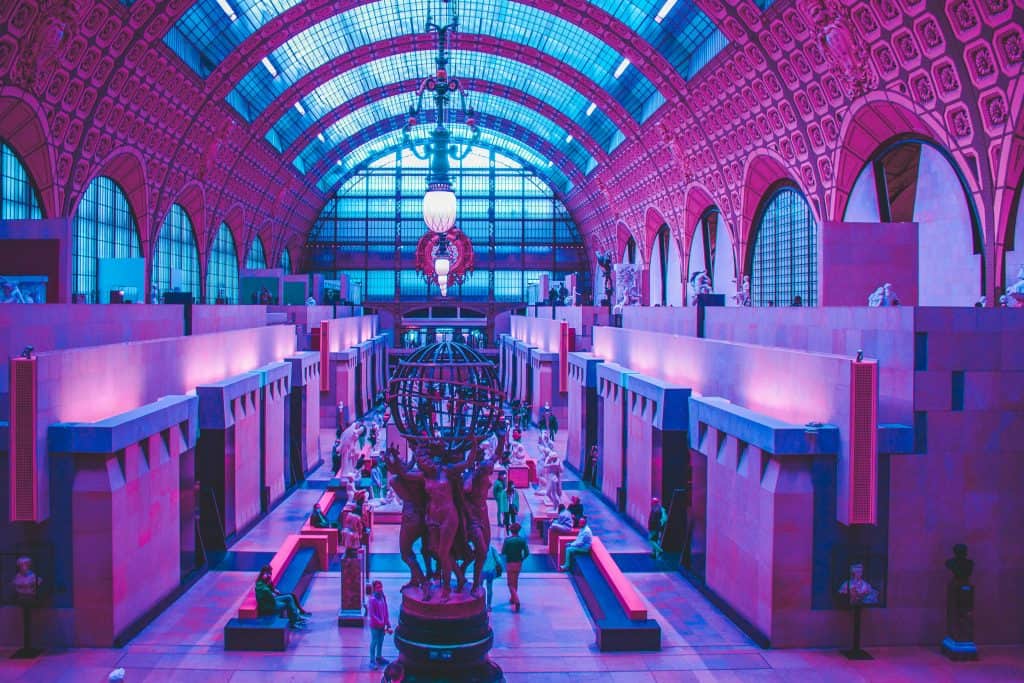
14 Mar Navigating the Challenges of Digital Exhibitions
The landscape of art exhibitions has undergone a transformative evolution with the emergence of digital platforms. These platforms have become dynamic and innovative spaces where artists can showcase their creations in ways previously unimaginable. By harnessing the power of technology, digital art exhibitions have transcended the constraints of physical galleries, opening up new avenues for creativity and expression. The digital realm offers artists and curators a boundless canvas upon which to explore and experiment with diverse forms, styles, and interactive elements. From immersive virtual reality experiences to interactive installations, digital art exhibitions push the boundaries of traditional art presentation, captivating audiences with their ingenuity and interactivity. Yet, amid this era of unprecedented opportunity, challenges abound for organizers seeking to navigate the complexities of digital art curation and presentation. From technical glitches to issues of accessibility and audience engagement, the digital landscape presents its own set of hurdles that require innovative solutions and strategic planning.
Common Challenges

Photo by Diane Picchiottino
Accessibility and Technical Barriers
Accessibility issues in the context of digital exhibits are brought about by differences in internet access and audience levels of digital literacy. Assuring compatibility across various hardware and software platforms is another difficulty that may obstruct the smooth transmission of material. In addition, the inclusion of persons with disabilities is a crucial factor that demands the execution of strategies to ensure that digital exhibits are user-friendly and accessible for all attendees.
Engagement and Interactivity
Capturing and maintaining audience interest in a virtual environment is a formidable task, prompting the need for innovative interactive experiences. Unlike traditional exhibitions, digital platforms offer opportunities to transcend physical constraints and foster deeper engagement. Emphasizing active participation over passive screen-based viewing is essential to sustain audience interest and foster meaningful interactions with the content.
Monetization and Value Perception
Translating the traditional art market model to the digital sphere presents ongoing challenges for organizers. There persists a perception that digital art is inherently less valuable than its physical counterpart, complicating efforts to monetize digital exhibitions effectively. Securing sustainable funding and revenue streams is a pressing concern, requiring creative approaches to shift perceptions and demonstrate the intrinsic value of digital artwork within the broader cultural landscape.
Conservation and Ownership
Preserving digital artworks amidst rapid technological advancements necessitates comprehensive long-term strategies. The dynamic nature of digital media introduces complexities in maintaining the integrity and authenticity of artworks over time. Issues surrounding ownership rights and intellectual property further complicate matters, calling for robust solutions to safeguard digital assets and uphold the rights of creators and stakeholders in the digital realm.
Solutions and Strategies

Photo by Diane Picchiottino
Inclusive Design and Technology
When it comes to inclusive design and technology, the focus is on making websites and mobile applications more accessible. The intention is to make sure that a larger audience can interact with information by including features that accommodate different types of impairments, such assistive technology. Providing downloading material and offline viewing alternatives further broadens the reach by enabling access to information and experiences in a variety of settings and scenarios.
Interactive Storytelling and Experiences
Interactive storytelling and experiences are being revolutionized through the adoption of augmented reality (AR) and virtual reality (VR) technologies. These immersive mediums allow users to engage with narratives in unprecedented ways, fostering deeper connections and emotional resonance. Furthermore, integrating social media platforms and dedicated forums encourages user participation, turning storytelling into a collaborative endeavor where audience input shapes the narrative direction. Designing interactive elements that dynamically respond to user actions enhances engagement and creates personalized experiences.
New Models for Value and Monetization
The evolution of value and monetization models in the digital landscape is marked by the exploration of innovative concepts such as microtransactions, tokenization, and non-fungible tokens (NFTs). These mechanisms offer new avenues for creators to monetize their work while providing consumers with unique ownership experiences. Moreover, offering tiered memberships and exclusive content to patrons fosters a sense of community and support among audiences. Collaborating with sponsors and other institutions ensures financial sustainability and opens up opportunities for cross-promotion and mutual benefit.
Collaboration and Standardization
Collaboration and standardization efforts are essential for the preservation and integrity of digital art in the long term. Establishing protocols and best practices for digital art preservation ensures that artworks remain accessible and authentic over time. Clear frameworks for ownership and copyright address legal and ethical considerations, fostering trust within the art world and protecting the rights of creators and collectors alike. Leveraging blockchain technology for secure authentication and tracking adds an extra layer of transparency and accountability, further enhancing the integrity of digital art ecosystems.

Photo by Diane Picchiottino
Conclusion
it’s evident that the journey of exploration and discovery is ongoing and multifaceted. Throughout our exploration, we’ve delved into various aspects of human knowledge, ranging from the depths of science and technology to the intricacies of art and philosophy. We’ve encountered challenges and triumphs, failures and successes, all of which have contributed to our collective understanding of the world and ourselves. As we move forward, it’s essential to remember that curiosity and open-mindedness are the driving forces behind progress. Embracing diversity of thought and welcoming new perspectives will continue to propel us toward greater innovation and understanding. Moreover, fostering a spirit of collaboration and empathy can help us address the complex issues facing our planet and create a brighter future for generations to come. Each discovery, each interaction, and each moment of reflection adds depth and richness to the fabric of our existence. Let us remain steadfast in our pursuit of knowledge, guided by the principles of curiosity, compassion, and humility. Together, we can continue to push the boundaries of what is known, and embark on new journeys of discovery that inspire, enlighten, and unite us all.
Key Takeaways
Challenge | Solution |
Accessibility and Technical Barriers | Inclusive design, adaptive technology, and offline viewing options |
Engagement and Interactivity | AR/VR, social media integration, and dynamic interactive elements |
Monetization and Value Perception | NFTs, tiered memberships, and strategic collaborations |
Conservation and Ownership | Protocols, blockchain, and clear ownership frameworks |
FAQs
How can digital exhibitions address limited internet access?
Digital exhibitions can address limited internet access by employing a variety of strategies to ensure accessibility to a broader audience. One effective approach is to utilize adaptive websites and mobile apps that can adjust to different internet connection speeds and device capabilities. By optimizing the user experience for various devices and network conditions, digital exhibitions can reach individuals with limited internet access without compromising the quality of the viewing experience. Additionally, providing offline viewing options enables individuals to download content for later viewing, allowing them to engage with the exhibition at their convenience, even without an internet connection. By implementing these measures, digital exhibitions can effectively overcome barriers related to limited internet access and reach a wider audience.
What measures ensure the long-term preservation of digital artworks?
Ensuring the long-term preservation of digital artworks requires a multifaceted approach that addresses technological, legal, and institutional challenges. To safeguard digital artworks for future generations, it is essential to develop robust preservation protocols that encompass metadata standards, file formats, and storage solutions tailored to the unique characteristics of digital media. Leveraging blockchain technology for authentication and provenance tracking can enhance transparency and trust in the digital art market, mitigating concerns related to authenticity and ownership. Furthermore, establishing best practices for digital art preservation, including regular backups, migration strategies, and documentation of technical specifications, can help mitigate the risks of obsolescence and data loss. By implementing these measures, stakeholders can contribute to the long-term sustainability and accessibility of digital art for years to come.
How can digital art exhibitions compete with the perceived value of physical art?
n order to compete with the perceived value of physical art, digital art exhibitions must innovate and diversify their monetization strategies while emphasizing the unique qualities and experiences offered by digital mediums. One avenue for generating revenue and enhancing perceived value is the adoption of Non-Fungible Tokens (NFTs) as a means of authenticating and trading digital artworks. NFTs provide a secure and transparent method for establishing ownership and provenance in the digital realm, thereby increasing the perceived value of digital art among collectors and investors. Additionally, offering exclusive content and experiences to patrons, such as behind-the-scenes access, virtual tours, or interactive installations, can cultivate a sense of exclusivity and prestige around digital art exhibitions. Collaborating with sponsors and partners to enhance the production quality, marketing reach, and overall presentation of digital exhibitions can further elevate their perceived value in the eyes of the audience. By embracing innovative monetization models and prioritizing user engagement, digital art exhibitions can effectively compete with the allure of physical art in today’s digital landscape.
Explore the “Impact of Travel and Residencies on Artists’ Work”, as we look into how these experiences foster cultural exchange, inspire creativity, and cultivate new perspectives, enriching both the individual artist and the global artistic community.

